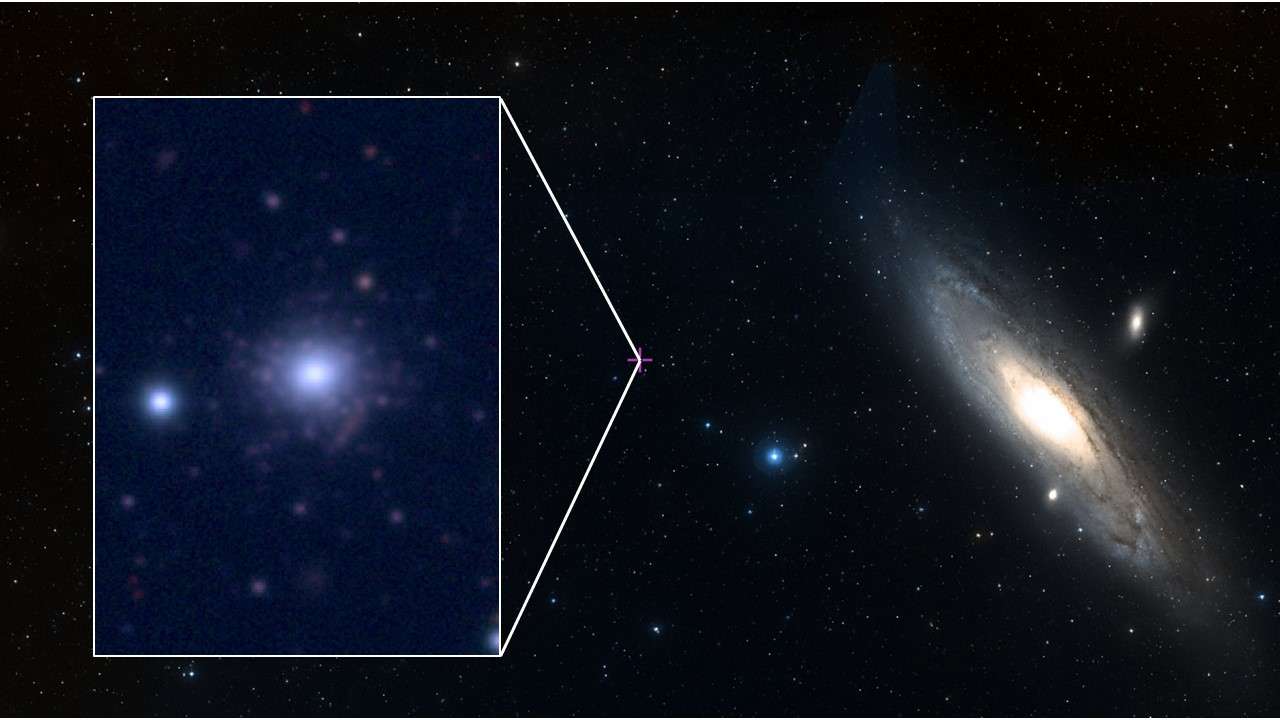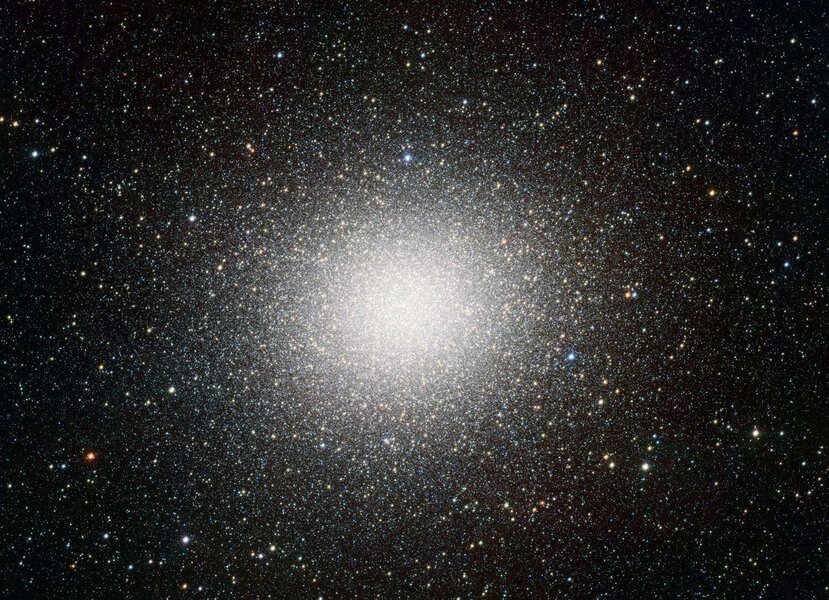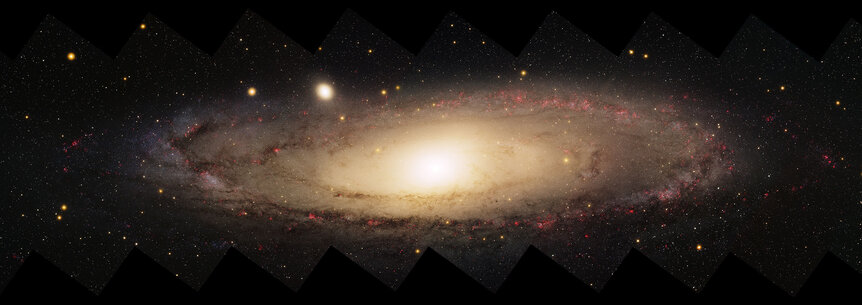Create a free profile to get unlimited access to exclusive videos, sweepstakes, and more!
An ancient star city circles our galactic twin. In fact... it's *too* ancient

Astronomers have found that a giant cluster of stars orbiting the Andromeda Galaxy is incredibly deficient in heavy elements, so much so that it totally blows away any previous record. This likely means it's terribly ancient, perhaps older than any other such cluster ever seen. It also changes what astronomers think about how such clusters are born.
Even cooler? This discovery was made by serendipity.
Globular clusters, if you missed it the first 200 times I wrote about them, are spherical collections of stars, usually hundreds of thousands if not over a million, all packed into dense balls usually a hundred or so light years across. Stars are so close together in the core that there can be thousands in the volume of space that could fit between the Sun and Alpha Centauri, the nearest star system to us.
They orbit galaxies, and some big galaxies have thousands of them. Our Milky Way has about 160 known, some of which are spectacular through even small telescopes (heck, Omega Centauri is visible to the naked eye!).
They're also old. They probably formed along with galaxies themselves over 10 billion years ago when the Universe was young. That part is important! Back then, the Universe didn't have lots of heavy elements like iron, magnesium, and sodium. It was almost entirely hydrogen and helium (elements heavier than that are called, confusingly, metals by astronomers). Once stars first formed, they fused those light elements into heavier ones in their cores. Massive stars exploded, seeding their surroundings with those heavy elements, or less massive stars blew winds that slowly leaked those elements out into space.
Either way, we can judge a star's age by how many of these heavy elements are in it. The lower the abundance, the older the star.
In fact, there's a concept called the metallicity floor, where stars in globular clusters have a minimum amount of these heavy elements, and you just won't find any with lower amounts. It's part observational — we simply don't see any stars like that — and theoretical — it's thought that before those heavy elements came along clusters didn't get more massive than about a hundred thousand times the mass of the Sun.
Here's where the fun bit is.
A team of astronomers were using the monster Keck telescope in Hawaii to look at five globular clusters around nearby galaxies. They finished up, but still had a couple of hours on the telescope. So why not, they figured, and pointed the 'scope at the globular RBC EXT8, which orbits the Andromeda Galaxy. This is a nearby spiral that's a sibling of the Milky Way, just 2.5 million light years away. The globular cluster is about 90,000 light years from Andromeda's center at the moment.
When they analyzed their data, they were shocked. The stars in the RBC EXT8 had the lowest metallicities ever seen. The lowest abundances in clusters seen before this were about 1/250th what you find in the Sun (so if you look at how much iron, say, there is in the Sun, the most metal-poor globulars had 1/250th that amount).
RBC EXT8 has 1/800th the amount of iron the Sun has. That's a factor of three lower than the lowest globular ever seen! It's even more depleted in magnesium, with 1/3rd as much of that element as iron. This is a seriously anemic cluster of stars.
They were so surprised by this that they looked at other factors to see if maybe there was something confounding the results, but other age indicators they looked at showed that indeed, RBC EXT8 is ancient.
Another thing: RBC EXT8 is massive cluster, with over a million times the mass of the Sun, putting it at the top of the scale of heavyweight globulars. Theoretically speaking, it's completely unclear how it even exists. Clusters that massive should have more heavy metals in them.
This is really surprising, for another reason: The cluster is relatively bright and easy to observe with big telescopes. It was sitting right under our noses (well, over our heads) this whole time. That implies there are more like it out there just waiting to have their abundances analyzed.
... and I wonder. Sometimes, over the eons, a cluster can pass too closely to its host galaxy and get pulled apart by the galaxy's gravity. This creates a stream of stars on the same orbit as the original cluster, torn away from their home cluster. We see many of these in the Milky Way, including the newly discovered Phoenix Cluster stream, which is also very old: probably around 11.2 billion years of age.
Nothing like that had been seen before, and it's possible there was an entire generation of low-metallicity globulars that either were shredded early on by their galaxies, or merged into bigger clusters. Perhaps RBC EXT8 is an example of that, an aggregation of many members of a long-gone class of objects, only existing now as parts of a more massive object, or a shredded stellar stream that will eventually merge with the host galaxy itself.
I find that a very romantic idea. It also means there are many such objects out there we hadn't thought of existed, perhaps destroyed or assimilated long ago, and we just were born too late to see them. But maybe they left clues behind, fossils of their former selves or some impact on the galaxy that we can tease out.
What else is out there that we have yet to observe? Perhaps there are more things in the heavens than are dreamt of in our science.





























